
The Pterophoridae or plume moths are a family of Lepidoptera with unusually modified wings, giving them the shape of a narrow winged airplane. Though they belong to the Apoditrysia like the larger moths and the butterflies, unlike these they are tiny and were formerly included among the assemblage called "microlepidoptera".
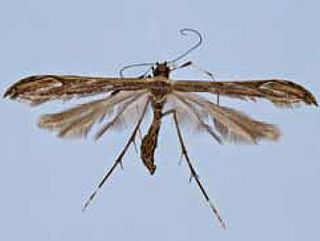
Hellinsia beneficus is a moth of the family Pterophoridae. It is native to Mexico, but was introduced to Hawaii in 1973 as a biological control agent against mistflower, Ageratina riparia.
Leptodeuterocopus neales is a moth of the family Pterophoridae that is known from Costa Rica, Ecuador, Guatemala, Mexico, Suriname, Paraguay, Peru and Venezuela. It has recently been recorded from Florida.
Exelastis montischristi is a species of moth in the genus Exelastis known from Hispaniola, Ecuador, Grenada, Jamaica, Martinique, the Virgin Islands, Florida and Texas. It has also been recorded from Tanzania.
Postplatyptilia pusillus is a moth of the family Pterophoridae. It was described by Rodolfo Amando Philippi in 1864.
Singularia is a genus of moths in the family Pterophoridae. It includes all species formerly placed in the genus Chocophorus and five new species described in 2016.
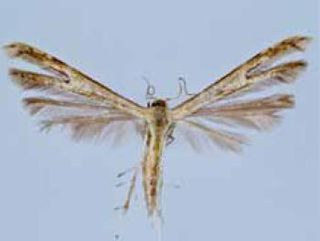
Adaina is a genus of moths in the family Pterophoridae. The genus was erected in 1905 by J. W. Tutt. Several of its species have gall-inducing larvae, such as Adaina primulacea, of which the larvae induce stem galls on Chromolaena odorata, and Adaina microdactyla, which induces stem galls on Eupatorium cannabinum.

Adaina bipunctatus is a moth of the family Pterophoridae. It is found in the United States, including Florida and Mississippi. It has also been recorded from Trinidad, the West Indies, Brazil and Ecuador.
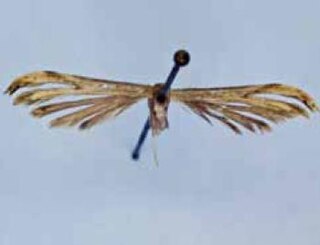
Emmelina buscki, also known as the tropical morning glory plume moth, is a moth of the family Pterophoridae. It was described by William Barnes and Arthur Ward Lindsey in 1921. It is found in North America, Central America, and northern South America.
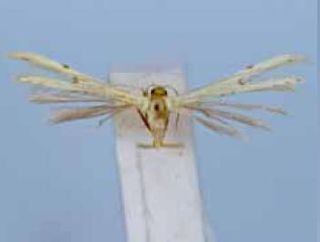
Adaina simplicius is a moth of the family Pterophoridae. It is found in the United States, Brazil, Costa Rica, Ecuador, Paraguay and Puerto Rico. It was introduced to South Africa for study as a biological control agent for Eupatorium macrocephalum.

Adaina beckeri is a moth of the family Pterophoridae. It is known from Costa Rica and Belize.
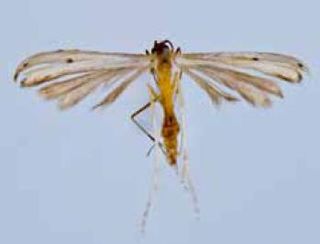
Adaina hodias is a moth of the family Pterophoridae. It is found in Brazil, Costa Rica, Venezuela (Mérida), Ecuador and Mexico.

Adaina bernardi is a moth of the family Pterophoridae. It is found in Costa Rica and Mexico.

Adaina planaltina is a moth of the family Pterophoridae. It is found in the Federal District of Brazil.
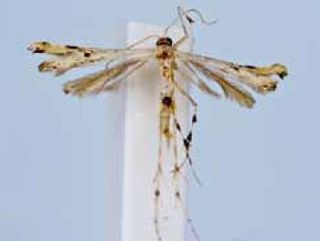
Adaina parainvida is a moth of the family Pterophoridae. It is found in Costa Rica and on Jamaica.
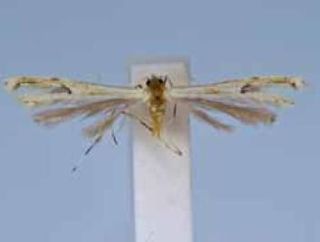
Adaina costarica is a moth of the family Pterophoridae. It is found in Costa Rica.
Adaina praeusta is a moth of the family Pterophoridae. It is only known from Puerto Rico.

Adaina scalesiae is a moth of the family Pterophoridae that is endemic to the Galapagos Islands, where it was discovered by Bernard Landry on Bella Vista on April 1, 1992, and on May 25 of the same year on the island of Santa Cruz. The species was also found in Volcan Darwin, a province 15 kilometres (9.3 mi) from Puerto Villamil, on May 25, and 400 metres (1,300 ft) above sea level on Pinta Island where it was found from March 13 to 21. The species is attracted to various lamps including mercury-vapor lamps.
Melanoptilia is a genus of moths in the family Pterophoridae described by Cees Gielis in 2006. All described species come from Latin America.
Cees Gielis is a Dutch entomologist and researcher of biodiversity, specializing in Lepidoptera, at the Naturalis Biodiversity Center in Leiden, Netherlands. As of March 2019, Gielis authored 378 taxa within the family of Pterophoridae and 19 within the family of Alucitidae.













